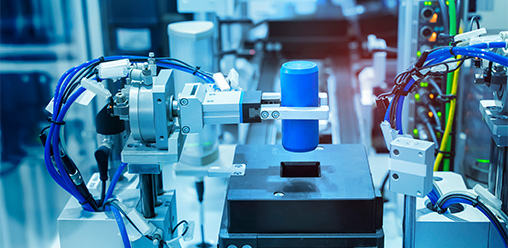Troubleshooting Pneumatic Systems
Post By: Ryan King On: 04-05-2021 Read Time: 4 minutes - Guides - Pneumatics
Post By: Ryan King On: 04-05-2021 Read Time: 4 minutes - Guides - Pneumatics
A pneumatic system is a complex collection of interlinked components. Like any machine, these need regular tuning to run at peak performance. This usually means making frequent adjustments to correct minor imbalances, and regular check-ups for faulty or broken components. It includes making sure connections are secure and that there are no leaks. Sometimes your system just seems off, so you need to troubleshoot the problem.

These are some of the steps you can take in troubleshooting pneumatic systems:
Before you begin, the first thing to do is to secure your system so it's completely safe. Relieve the storage tank pressure to prevent accidental escape of compressed air. Secure any loads not already locked down mechanically, so they don't drift or fall on people.
Disconnect the power supply, so there's no chance of any electrical activity that could cause injury. Solenoid valves often have a manual override, so that you can still operate the system for troubleshooting, even when the power supply is off. You should also have lockout valves on your pneumatic system to prevent it from operating accidentally.
The first step in troubleshooting a breakdown is to ask yourself the three 'W' questions: what, when and where. Your system operators are the starting point for answering these questions, as they'll be more familiar with the machinery's components and functions.
The most likely what problems are insufficient pressure, a slow-moving or drifting actuator, and issues with the filtration unit or valves. Click here to learn more about typical problems in pneumatic systems.
Knowing when can help you decide where to start troubleshooting. Problems that occur suddenly indicate an acute catastrophic failure, whereas gradual failures indicate chronic wear and tear issues. Catastrophic breakdowns occur when lines rupture, components break or there's a mechanical problem. Wear and tear shows up as leaks, contaminants in the system, or worn components like seals.
Finding out where in the machine cycle the problem occurs also helps you distinguish between a chronic condition and an acute breakdown. Start with your maintenance logs for any note of recurrent problems, then ask yourself why it keeps happening and what you can do about it.
It's important to know how all the machine's components and subsystems interrelate before you attempt any troubleshooting. The service manual and the schematic drawings are vital diagnostic tools, which can help you determine whether your pneumatic system is operating within its design parameters. The schematics contain valuable information such as flow rates, pressure settings and test points, cylinder stroke lengths and air motor speeds. The service manual and updates sometimes report potential issues, and are useful in diagnosing problems.
The next step is to locate and identify problems visually. Walk around the machine to spot basic issues like loose or broken components, worn or extruded seals, and frayed, burst or leaking hoses. Clean out clogged filters and replace if necessary, check for leaks, and look for any pinched hoses.
When you've done all that, start up the machine (if you can) and let it run. Watch the system working and observe the malfunction. Is it still happening? Seeing a problem first-hand often makes the underlying issue obvious and cuts down your troubleshooting time.
Look out for things like mobile parts moving erratically, excessive air leaks, stiff or sloppy manual controls, and incorrect system pressures.
Once you've run the machine, you must make it secure again, venting stored pressure and disconnecting the power.
All the machine's parts are interrelated, so one subsystem malfunctioning will very likely mean a related malfunctioning of another subsystem. Isolating each subsystem helps, so you can focus on each one separately. This does reduce the diagnostic area, but you must take extra safety precautions when you run the machine. This means plugging any disconnected lines or any ports that you open when isolating a subsystem, to prevent contamination and air leaks. You should also monitor internal system pressures while the machine is running, so you don't exceed maximum permissible pressures.
You might spot an immediate problem during the isolation step, but the apparent problem may have an underlying root cause. A slow actuator, for example, may actually be due to faulty valve seals or insufficient lubrication. You must know the system's operating principles thoroughly, and all its component parts, if you want to identify a problem's root cause accurately. You'll save time and guesswork exchanging parts if you list all possible underlying causes, and eliminate each one separately.
After identifying the possible you must select the most probable. This means testing your conclusions about the likely underlying causes, going down your list until you're left with one inescapable answer. This could be as simple as adding lubricant or altering its drip rate. Other tests include checking your actuator alignment, flow rates, air pressures and air system temperature.
Testing should pinpoint the fault. You then have to decide whether to replace the part or repair it. Replacing is quicker but more costly in materials, while repairing takes longer and increases your labour costs. It also depends on whether you can get replacement parts easily, and whether you can do your own repairs.
The final step in troubleshooting pneumatic systems is to make a report. Keep a log of the issue, the solution, and what changes you made to individual machines. Maintaining a troubleshooting record and regularly updating your schematics will help you solve future problems more quickly.